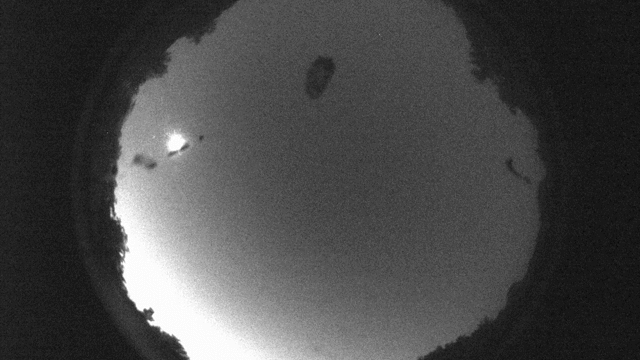Bright fireball observed in southern Romania
On Tuesday, July 11, 2023, at 9:49:54 PM, during twilight, people in southern Romania were able to witness a large fireball. It was followed by a loud noise (sonic boom), characteristic of any object traveling at supersonic speeds. The object, with a brightness greater than that of a full moon, burned up in the atmosphere, and the luminous phenomenon exhibited several increases in brightness, associated with fragmentations due to the dynamical pressure along the trajectory.
The sky monitoring network in Romania, called MOROI, was initiated mainly for the detection of meteors entering the atmosphere and producing a luminous phenomenona called a meteors. It is managed by a team of researchers from the Astronomical Institute of the Romanian Academy.
The all-sky camera located in Obarșia Nouă, in the Olt County, belonging to the MOROI network, recorded the event most effectively. The meteor was observed during twilight and lasted approximately 5 seconds. The fragmentation during the observation saturated the camera, and the preliminary estimation of the brightness (approximate magnitude -16) significantly exceeds the maximum brightness of a full moon night, classifying the phenomenon as a fireball.
The recorded images from the all-sky cameras of the MOROI network (integrated into the European FRIPON network) along with complementary recordings will allow for the calculation of the object's trajectory, the altitude at which it extinguished, the probability of this object to produce fragments that may reach the ground (meteorites), as well as the most likely location where these fragments could have fallen.
Published on: Jul 13, 2023
